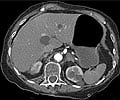Researchers say babies born to mothers who smoke are more likely to be slower to wake or respond to stimulation, and this might explain their raised risk of Sudden Infant Death Syndrome (SIDS).
Researchers say babies born to mothers who smoke are more likely to be slower to wake or respond to stimulation, and this might explain their raised risk of Sudden Infant Death Syndrome (SIDS).
To reach the conclusion, scientific director of the Ritchie Center for Baby Health Research Associate Professor Rosemary Horne and PhD student Heidi Richardson compared babies of mothers who smoked both during the pregnancy and after the baby was born, with babies who lived in a smoke-free environment.According to Professor Horne, the study suggests that maternal smoking can impair a baby's ability to respond to external stimuli, which may explain their increased risk of SIDS.
"Those babies whose mothers smoked did not have as many arousals overall and the progression of the arousal response through the brain was also impaired. Mothers who smoked while pregnant and continued to smoke afterward significantly increased their baby's chances of succumbing to SIDS," Professor Horne said.
Although the exact cause of SIDS is unknown, research suggests that an impairment of the arousal process from sleep in response to a life-threatening situation is involved. Autopsies of SIDS victims have revealed brainstem abnormalities in key areas that are required for arousal and cardio respiratory control.
The study involved 12 healthy, full-term infants born to mothers who smoked an average of 15 cigarettes per day. Their arousal responses during daytime sleep were monitored and compared with that of healthy infants who were born to non-smoking mothers.
The study was performed on each child on three occasions: at two to four weeks, two to three months and five to six months.
Advertisement
Source-ANI
ARU/L














